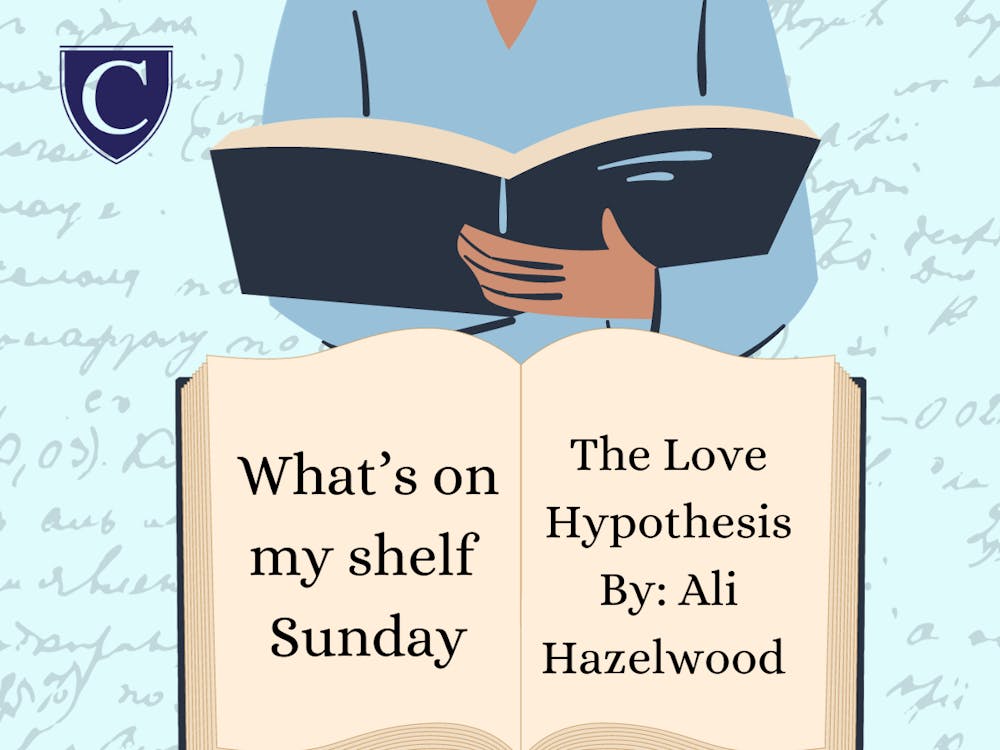“The Love Hypothesis” by Ali Hazelwood centers on Olive, a 26-year-old in her third year of Stanford’s Ph.D. program, whose dwindling free time is nothing compared to her lack of romantic prospects.
Olive kisses the only man in her vicinity in a desperate attempt to convince her best friend, Anh, to go after the guy she likes, Jeremy. To her utter horror, the man Olive kisses happens to be Dr. Adam Carlsen, the most notoriously cruel and uptight professor Stanford has to offer.
Despite Olive’s panic, Adam doesn’t end her academic career right then and there. Rather, he agrees to be her fake boyfriend until Anh and Jeremy — the same guy who Olive happened to go on one date with months prior – finally get together. Adam proposes that they continue their fake relationship until Sept. 29th, the day his department decides whether to release the research funds he has been waiting on.
Their plan is to meet every Wednesday at the on-campus Starbucks so they can be seen together and maintain their ruse. Soon, to no one’s surprise but their own, their fake relationship gets much more complicated.
After several dates and unplanned run-ins, Olive begins to develop feelings for Adam. She struggles to reconcile the Adam she knows with Dr. Carlsen, the harsh advisor who leaves her fellow Ph.D. candidates in tears. As Olive’s plans to conduct research at Harvard the next year,, she has to figure out whether the attraction she feels for Adam is one-sided, and even worse, if she can work up the nerve to tell him.
I recently read this book for the second time and found that Olive’s moments of introspection and awkward conversations with Adam made me laugh as hard as they did the first time. Likewise, I grew more appreciative of Hazelwood’s ability to include common romance tropes without them feeling forced.
One example in which Hazelwood plays with common tropes takes place when Adam invites Olive to stay with him during an upcoming academic conference because the room he booked has two beds. She says she can’t because “there will only be one bed, for sure…. It’s always one bed,” Hazelwood wrote. While Adam doesn’t understand Olive’s joke, this moment breaks the fourth wall by referencing the one-bed trope popular in contemporary romance.
Outside of her budding relationship, Olive is a developed protagonist with real academic goals that do not get thrown aside when she falls for Adam.
Olive’s priority throughout the novel is her research in the early detection of pancreatic cancer, motivated by her mother’s death when she was in high school. Hazelwood’s own experience as a Ph.D. candidate and her professional career in neuroscience prevent the medical side of the book from sounding far-fetched.
Along these lines, Hazelwood leans into the novel’s title at the start of every chapter and includes a short hypothesis that foreshadows a development in the chapter. For instance, the ninth chapter starts with “hypothesis: the more I mention an attachment in an email, the less likely I will be to actually include said attachment,” and the tenth with “hypothesis: if I fall in love, things will invariably end poorly.”
Alongside the primary plot, “The Love Hypothesis” features romantic subplots between Olive’s and Adam’s friends. The more prominent secondary characters have motivations and layers of their own. For instance, Olive’s best friend Anh is passionate about making STEM more accessible to women of color and convinces Olive to stand up against sexual harassment she experiences later on in the novel. Similarly, Olive’s roommate Malcolm is the only one she confides in about her fake-dating scheme, and despite frequent mentions of his bisexuality, he isn’t boxed in as a token character.
Being a seasoned reader of the enemies-to-lovers trope, this has long been one of my favorite books. Olive’s internal turmoil — although occasionally frustrating — never fails to be realistic and endearing.
Enjoy what you're reading?
Signup for our newsletter
Rating: ★★★★★
Content warning: sexual harassment, professor/Ph.D. candidate relationship, explicit scenes
Support independent student media
You can make a tax-deductible donation by clicking the button below, which takes you to our secure PayPal account. The page is set up to receive contributions in whatever amount you designate. We look forward to using the money we raise to further our mission of providing honest and accurate information to students, faculty, staff, alumni and others in the general public.
Donate Now



